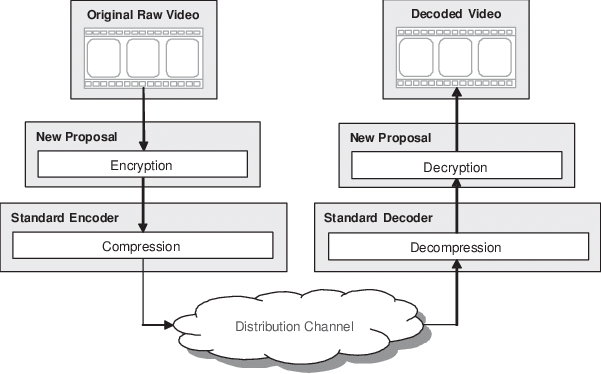Fundamentals Tutorial of Algorithm
What is an Algorithm?

An algorithm is a step-by-step set of well-defined instructions or rules that outlines a systematic approach for solving a problem or performing a specific task. Algorithms provide a clear, unambiguous sequence of actions to be taken to achieve a particular outcome. They are fundamental in computer science and mathematics and are used to solve a wide range of problems efficiently and effectively.
Algorithms are used in a wide variety of applications, including:
What are the top use cases of the Algorithm?
- Data mining: Algorithms are used to find patterns in data. This can be used for a variety of purposes, such as fraud detection, customer segmentation, and product recommendation.
- Machine learning: Algorithms are used to train machine learning models. Machine learning models can be used to make predictions, classify data, and cluster data.
- Natural language processing: Algorithms are used to process natural language. This can be used for a variety of purposes, such as text classification, sentiment analysis, and machine translation.
- Computer vision: Algorithms are used to process images and videos. This can be used for a variety of purposes, such as object detection, face recognition, and scene understanding.
- Cryptography: Algorithms are used to encrypt and decrypt data. This is important for security purposes.
- Graphics: Algorithms are used to generate graphics. This can be used for a variety of purposes, such as video games, animation, and scientific visualization.
What are the features of the Algorithm?
Here are some of the features of an algorithm:
- Definiteness: An algorithm must be definite, meaning that it must be clear and unambiguous. This means that the steps in the algorithm must be clear and easy to understand, and there should be no ambiguity about what the algorithm is supposed to do.
- Input: An algorithm must have an input, which is the data that the algorithm is supposed to work on. The input can be anything from a number to a string of text to a set of data points.
- Output: An algorithm must have an output, which is the result of the algorithm. The output can be anything from a number to a string of text to a set of data points.
- Finiteness: An algorithm must be finite, meaning that it must terminate after a finite number of steps. This means that the algorithm cannot run forever.
- Correctness: An algorithm must be correct, meaning that it must produce the correct output for any given input. This means that the algorithm must be designed correctly and that the steps in the algorithm must be correct.
- Efficiency: An algorithm should be efficient, meaning that it should use a reasonable amount of time and resources to run. This is important for practical applications, where algorithms are often used to process large amounts of data.
What is the workflow of the Algorithm?
The workflow of an algorithm refers to the step-by-step process that an algorithm follows to solve a specific problem or perform a task. It outlines the sequence of actions that need to be taken, considering various conditions and inputs, to achieve the desired outcome.
The workflow of an algorithm can be divided into the following steps:
- Problem definition: The first step is to define the problem that the algorithm is supposed to solve. This involves understanding the input and output of the algorithm, as well as the constraints that the algorithm must satisfy.
- Algorithm design: The next step is to design the algorithm. This involves coming up with a set of steps that will solve the problem. The steps in the algorithm must be clear, unambiguous, and finite.
- Algorithm analysis: Once the algorithm has been designed, it needs to be analyzed to ensure that it is correct and efficient. This involves checking that the algorithm will produce the correct output for any given input, and that it will use a reasonable amount of time and resources to run.
- Algorithm implementation: The next step is to implement the algorithm in a programming language. This involves translating the steps in the algorithm into code.
- Algorithm testing: Once the algorithm has been implemented, it needs to be tested to ensure that it works correctly. This involves running the algorithm on a set of test cases and checking that it produces the correct output for each case.
- Algorithm deployment: Once the algorithm has been tested and proven to be correct, it can be deployed to production. This involves making the algorithm available to users so that they can use it to solve problems.
How Algorithm Work & Architecture?

An algorithm is a sequence of steps that are followed to solve a problem. Algorithms are used in a wide variety of applications, including computer science, mathematics, and engineering. The architecture of an algorithm can vary depending on the problem that it is solving. However, there are some common elements that are found in many algorithms.
These elements include:
- Input: The input to an algorithm is the data that the algorithm needs to work on. The input can be anything from a number to a string of text to a set of data points.
- Output: The output of an algorithm is the result of the algorithm. The output can be anything from a number to a string of text to a set of data points.
- Steps: The steps in an algorithm are the instructions that the algorithm follows to solve the problem. The steps must be clear, unambiguous, and finite.
- Control flow: The control flow of an algorithm determines the order in which the steps are executed. The control flow can be sequential, branched, or recursive.
- Data structures: Data structures are used to store and organize the data that the algorithm needs to work on. The data structures that are used in an algorithm will depend on the problem that the algorithm is solving.
How to Install and Configure Algorithm?
There is no one-size-fits-all answer to this question, as the installation and configuration of an algorithm will vary depending on the algorithm itself and the environment in which it will be running.
However, there are some general steps that can be followed to install and configure an algorithm:
- Choose an algorithm: The first step is to choose an algorithm that is appropriate for the problem that you are trying to solve. There are many different algorithms available, so it is important to do your research and choose an algorithm that is well-suited to your needs.
- Find an implementation: Once you have chosen an algorithm, you need to find an implementation of the algorithm in a programming language that you are familiar with. There are many different implementations of algorithms available online, so you should be able to find one that meets your needs.
- Install the implementation: Once you have found an implementation of the algorithm, you need to install it in your environment. This may involve downloading the implementation from a website or cloning it from a git repository.
- Configure the algorithm: Once the implementation is installed, you need to configure it to work with your data. This may involve setting the input and output parameters of the algorithm, as well as any other configuration options that the algorithm may have.
- Run the algorithm: Once the algorithm is configured, you can run it to solve your problem. The output of the algorithm will depend on the specific algorithm that you are using.